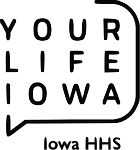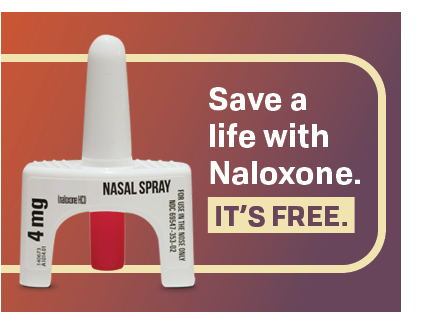
Iowa is facing a growing opioid problem, putting more people at risk of a fatal overdose every year. How can you help save someone's life? By knowing the signs of an opioid overdose and how to use naloxone, a medication that can help reverse opioid overdoses.
Learn the signs of an opioid overdose.
Signs of an opioid overdose include:
- Skin getting pale and clammy.
- Lips and fingernails turning blue or gray.
- Slow, erratic breaths, or no pulse.
- Snoring or gurgling noises while asleep or nodding out.
- No response when you yell the person’s name or rub the middle of their chest with your knuckles.
What should you do if you think someone is having an opioid overdose?
- Don’t run – call 911! Iowa’s Good Samaritan Law protects you if you witness a drug overdose.
- Give the person naloxone. If there’s no reaction within 3 minutes, give a second dose of naloxone.
- Start rescue breathing or chest compressions, following 911 dispatcher instructions.
- After naloxone is given, stay with the person for at least 3 hours or until help arrives.
Learn how to use naloxone nasal spray.
- Peel back the package to remove the device.
- Place the tip of the nozzle in either nostril until your fingers touch the bottom of the person’s nose.
- Press the plunger firmly to release the dose into the person’s nose.
- Move the person onto their side.
- Repeat if there is no response within 3 minutes – give the second dose in other nostril.
Find free naloxone near you.
You can get free naloxone nasal spray without a prescription at many pharmacies throughout Iowa. Find a pharmacy here.
Help stop opioid overdoses.
Now that you know what to do in case of an opioid overdose, tell your family and friends about naloxone and how to use naloxone. Be prepared to save a life.
Learn more about opioid overdose here.
Additional Resources
Community Opioid Overdose Reversal Medications Planning Toolkit
SAMHSA free toolkit that "provides actionable guidance for community leaders, public health professionals, and other partners to create effective overdose prevention and response strategies to improve local overdose reduction outcomes."
Naloxone Iowa
Website with information on how to access and use free naloxone in Iowa.

